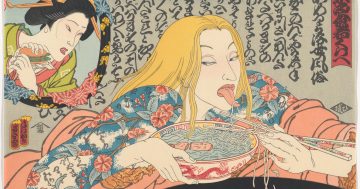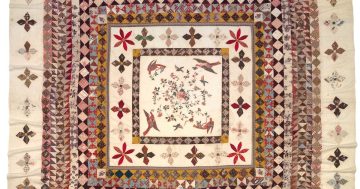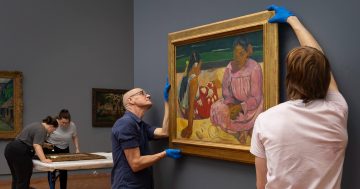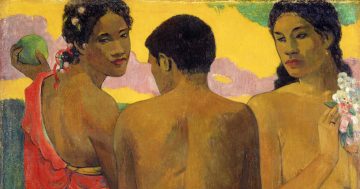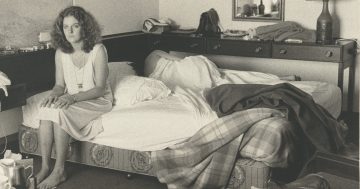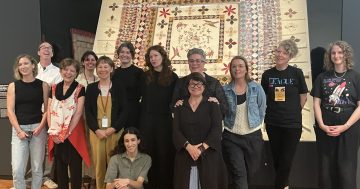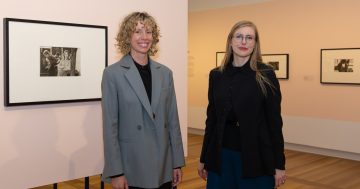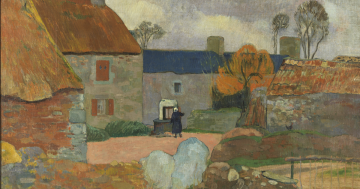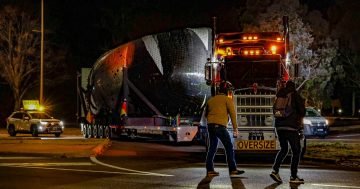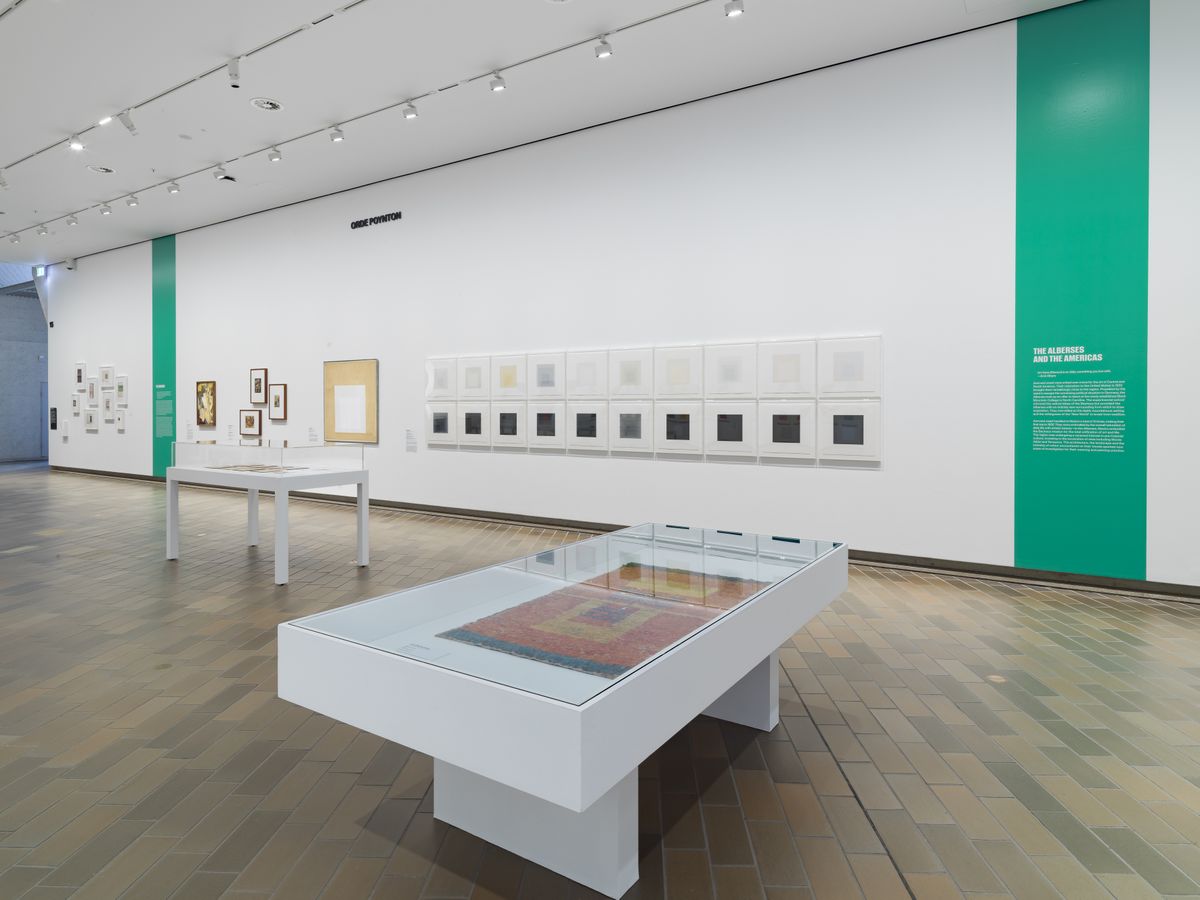
Anni & Josef Albers, installation view, National Gallery of Australia, Kamberri/Canberra, 2024, Photo: NGA.
How did modernism travel from Hitler’s Germany to the USA? A beautiful exhibition currently at the National Gallery of Australia explores this.
Annelise Fleischmann (1899-1994) and Josef Albers (1888-1976) met as students at the Weimar Bauhaus in Germany in 1922. Although both arrived as painters, Fleischmann had difficulties in being admitted to the school and found herself, on her second attempt, allotted a place in the weaving workshop. In contrast, Albers became fascinated with making assemblages out of discarded glass shards and glass bottle bottoms he found at the local rubbish tip and gravitated to the glass studios. They married in 1925 with Annelise taking the name Anni Albers.
They stayed at the Bauhaus until 1933 when the Nazis caused its closure. Although Anni was baptised and eventually confirmed in the Protestant Church, she was Jewish, and staying in Germany was not an option. Josef, who by this time was teaching at the Bauhaus, was offered a teaching position at the newly formed, pioneering Black Mountain College in rural North Carolina, despite not speaking a word of English. Strings were pulled in high quarters, their visas processed quickly and first-class steamship fares provided for them.
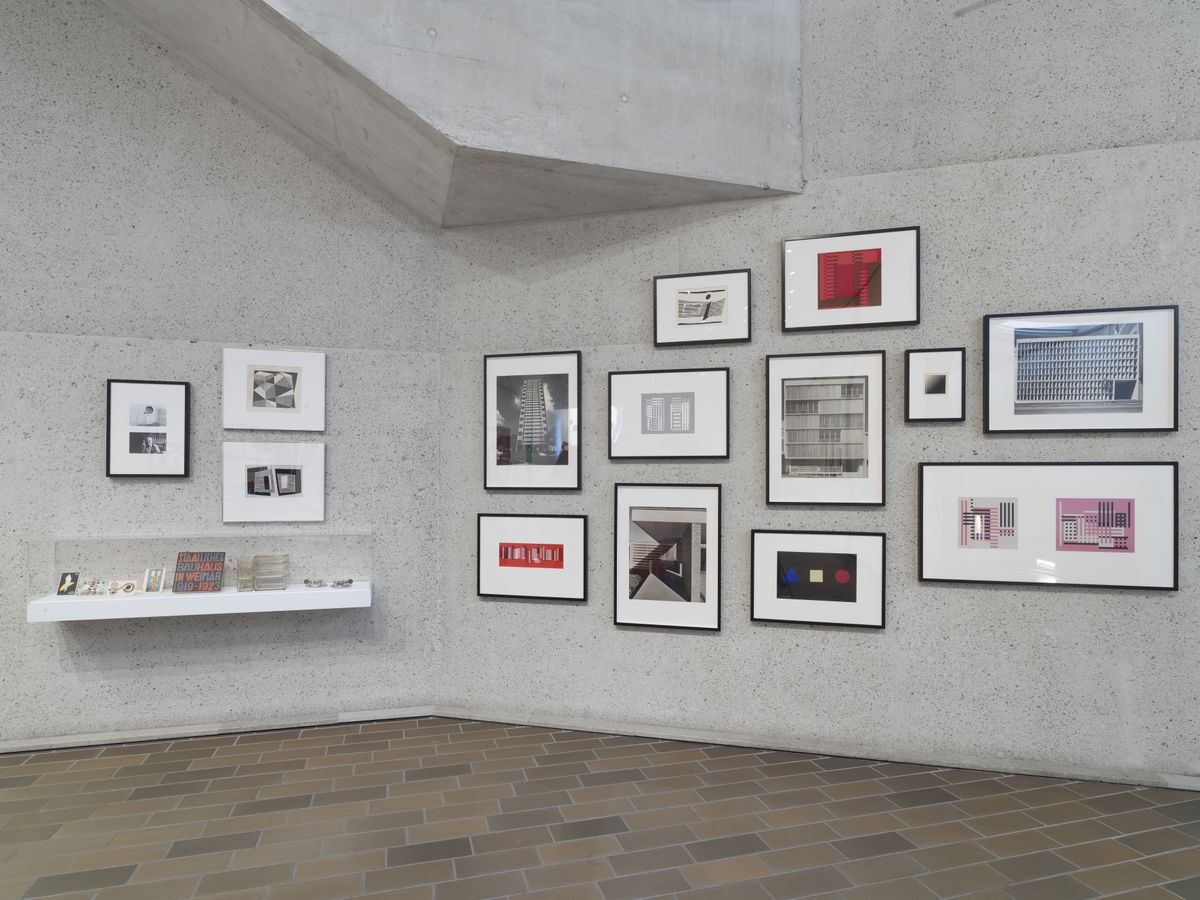
Anni & Josef Albers, installation view, National Gallery of Australia, Kamberri/Canberra, 2024, Photo: NGA.
While Josef was a relatively minor player at the Bauhaus compared to Walter Gropius, Wassily Kandinsky, Paul Klee and Johannes Itten, he quickly became the apostle of modernism in America and proselytised theories of colour and experimental art-making techniques. His impact on the New York School of modernists was considerable.
Anni taught weaving and advanced the idea that textiles could be regarded as independent artworks without having a practical function. In 1949, she was the first woman and textile artist to be granted a solo exhibition at New York’s Museum of Modern Art.
In 1950, Josef was appointed to Yale University as head of the newly formed Department of Design and the family moved to New Haven. Again, he was deemed an influential and inspiring teacher and started work on his Homage to the Square series that would dominate the rest of his life. His wife continued with textile works and built a reputation for what she termed her “pictorial weavings”. In 1971, Josef became the first living artist to be granted a retrospective exhibition at the Metropolitan Museum of Art in New York and a Josef Albers Museum was established in his birthplace of Bottrop, Germany.
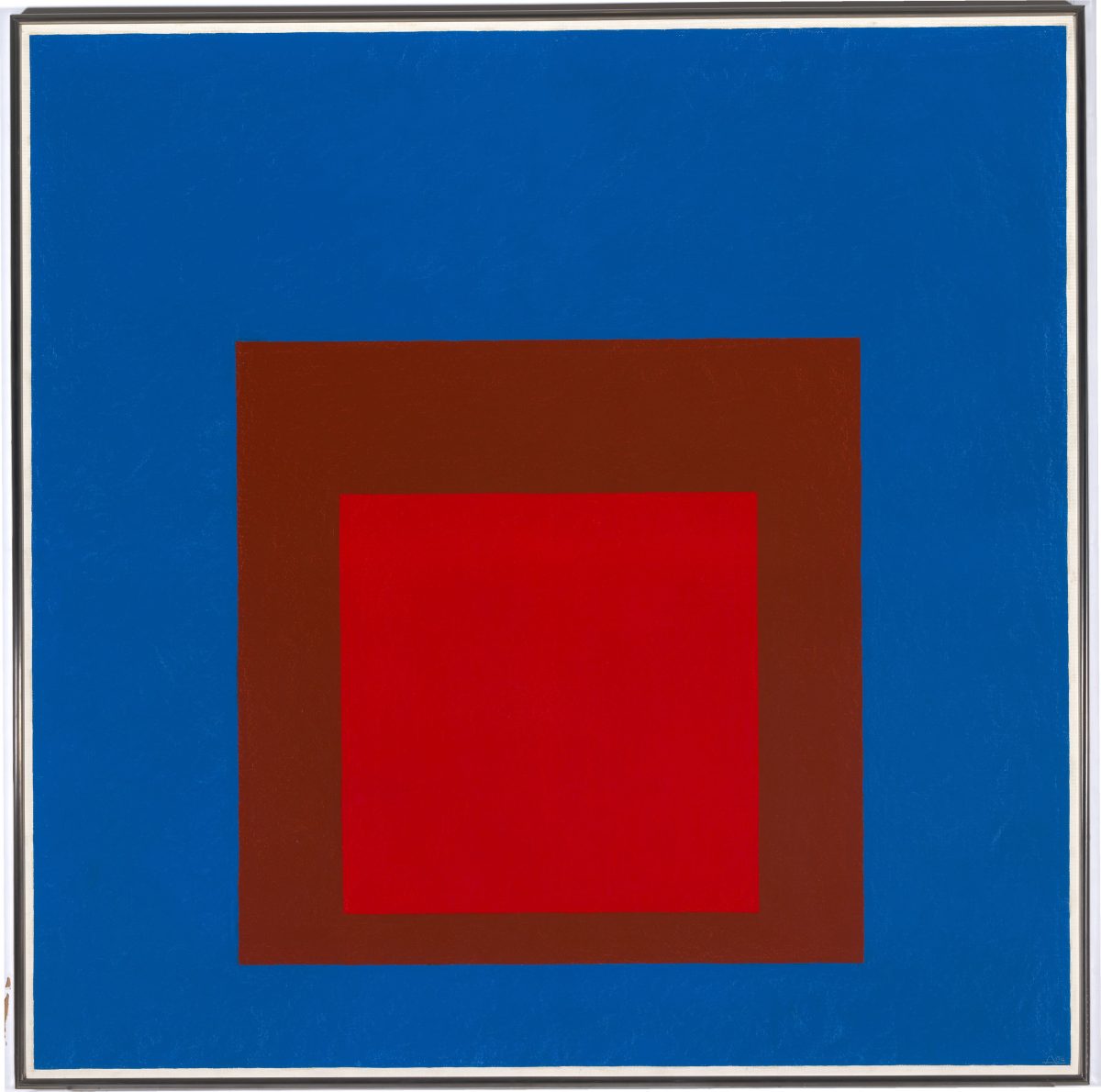
Josef Albers, Homage to the Square: On an early sky, 1964, National Gallery of Australia, Kamberri/Canberra, purchased 1981 © The Josef and Anni Albers Foundation. VG Bild-Kunst/Copyright Agency. Photo: NGA.
Ken Tyler, the legendary American master printer, told me he approached Josef asking if he would like to make a print with him. Josef threw out the challenge and invited Tyler to make a screenprint of one of the Homage to the Square designs, knowing perfectly well it would be impossible with the known technology to achieve the precision required in the registration. Tyler amazed Josef and produced the perfectly registered print and the two artists became firm friends and many prints followed of Josef’s and Anni’s work.
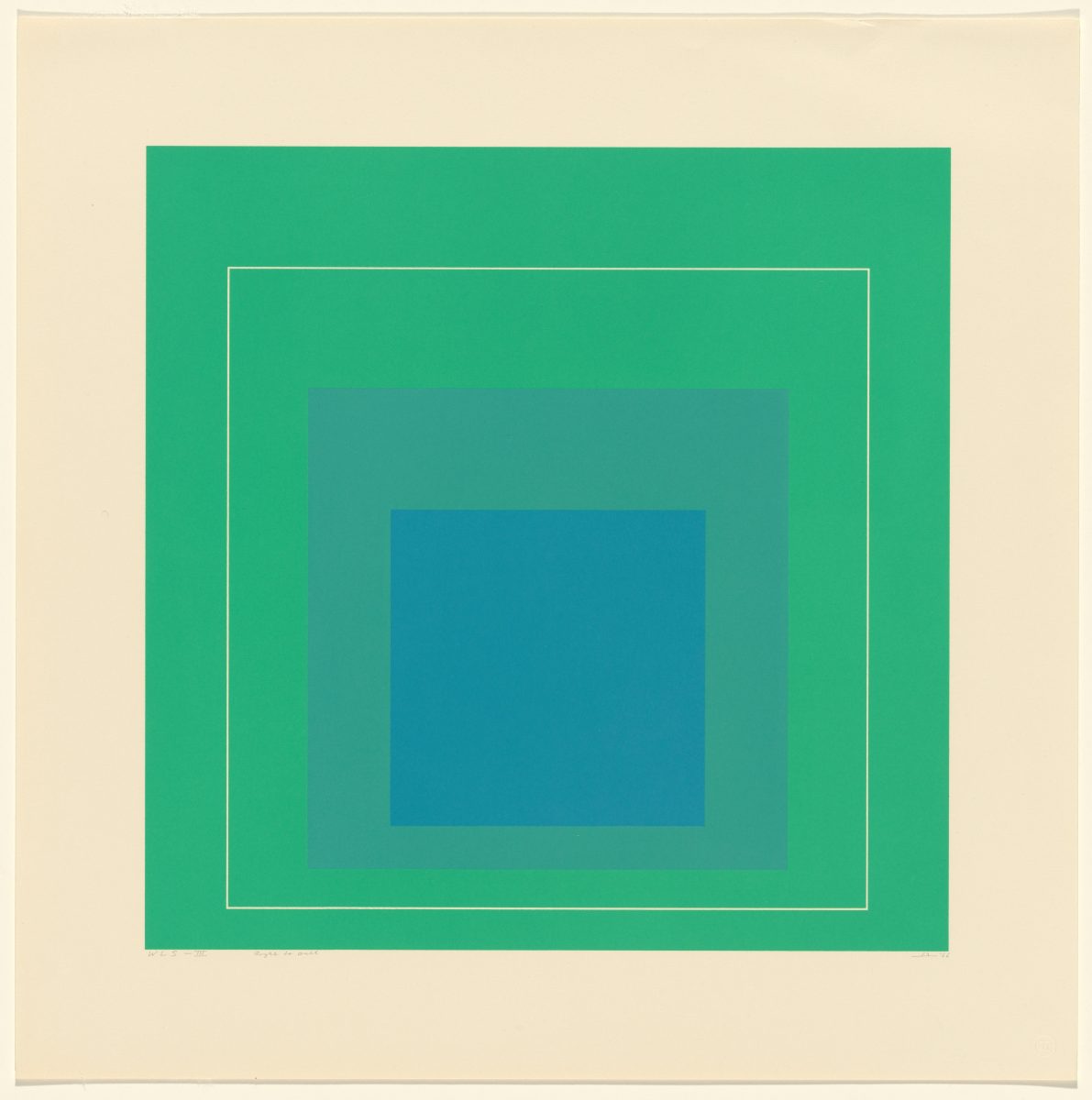
Josef Albers, Gemini G.E.L., White line square III, 1966, National Gallery of Australia, Kamberri/Canberra, purchased 1973 © The Josef and Anni Albers Foundation. VG Bild-Kunst/Copyright Agency, Photo: NGA.
Josef’s immense standing in the American art scene and his reputation for precision and exactitude opened the door for every major American artist wanting to have a print made by Tyler. To some extent, Tyler regarded Josef as his saviour and the kindest and most professional artist he ever knew.
The National Gallery of Australia has been acquiring the Tyler archive and related works over several decades. It has also received numerous generous donations from Tyler. This exhibition essentially has grown out of the Tyler collection at the gallery where curator Imogen Dixon-Smith has skilfully assembled the work of Anni and Josef within the context of other Bauhaus work, including that by Ludwig Hirschfeld-Mack, Paul Klee, László Moholy-Nagy and some designs from the Bauhaus Dessau weaving workshop.
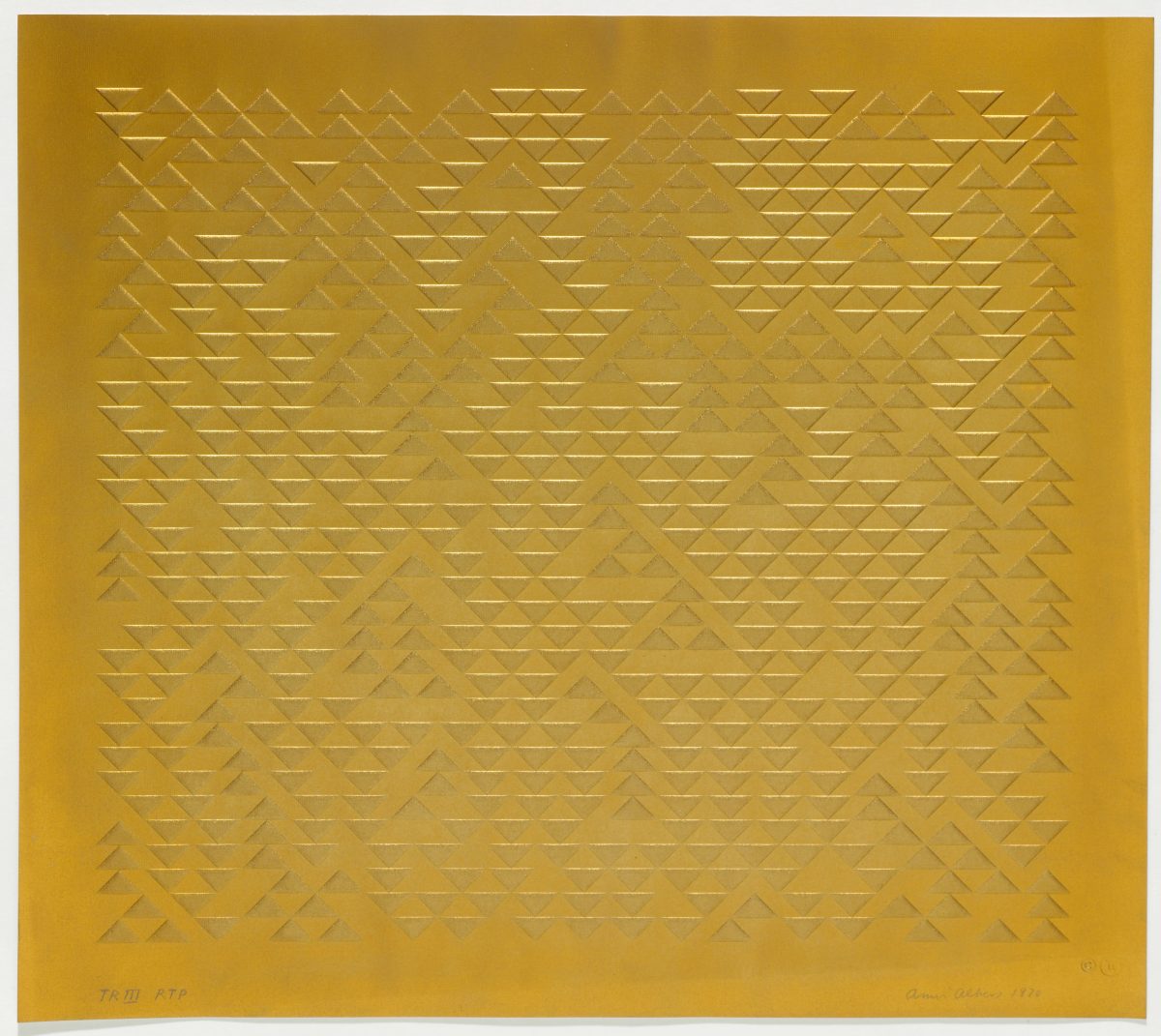
Anni Albers, Gemini G.E.L., TR III, 1970, National Gallery of Australia, Kamberri/Canberra, purchased 1973 © The Josef and Anni Albers Foundation. ARS/Copyright Agency, Photo: NGA.
It is a gem of an exhibition that invites careful scrutiny and demonstrates the immense depth of the NGA collection. At a time when there is a revival of interest in minimalism and hard-edge abstraction in contemporary Australian art, we are seeing the work of some of the artists on whose foundations many of the present trends are being built. It is a scholarly and contemplative exhibition that invites repeat visits.
Anni and Josef Albers at the National Gallery of Australia runs until 22 September, open daily 10 am to 5 pm, no admission charges.
Original Article published by Sasha Grishin on Riotact.


